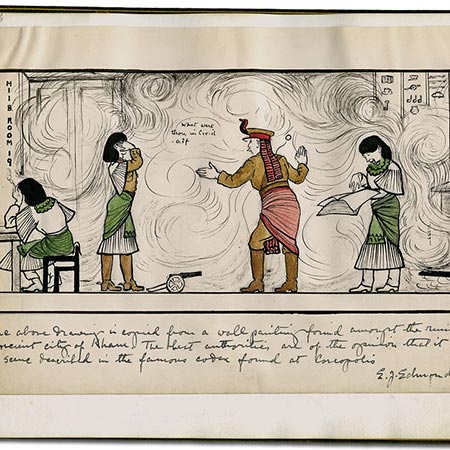
Hay joined the 1st Battalion of the Gordon Highlanders at the start of the war, one of the first to land as part of the British Expeditionary Force in Belgium. He received a serious bullet wound to the head at the battle of Mons but had to be left behind near the village of Audencourt after the battalion was ordered to retire and there were no stretchers to carry him. He was rescued by a French veterinary surgeon and eventually moved to a hospital in Cambrai, occupied by the Germans. After four months he was added to a list of “transportables” and transferred to a German fortress at Wurzburg, where he remained a prisoner for several months. The conditions were difficult and Hay and his fellow prisoners were kept under close guard. However, the extent of his injuries and the fact that he was able, through a contact in Germany, to obtain an exchange back to England in February 1915 allowed him the time he needed to recuperate at Seaton House. Hay published an account of his early war-time experiences, initially under a different name, in Wounded and a Prisoner of War (1916).
As a result of his natural aptitude for languages, and determined to still contribute to the war effort, in late 1915, Hay began employment in the Cryptology Department (MI1(b)) of the War Office. He was bi-lingual in French and had a good knowledge of German, Greek, Italian, Latin and Spanish. Within a short period of time Hay was promoted to Head of Department and expanded the team's research and involvement in wireless transmissions.
The staff of MI1(b) re-located from the War Office to a more private location at Cork Street, where security and secrecy were of paramount importance. The department developed into a large enterprise with 84 staff, including approximately 30 women. Hay was able to obtain copies of all cable messages which passed through London, which provided the research material used by Hay's team to decipher messages. Hay's pride in his department is summed up in his announcement that 'Cork Street was never defeated'. Hay's success resulted in the War Office asking him to review all the codes and ciphers used by the British Navy and Foreign Office.
Whilst working at MI1(b) Hay started working on a book about his experiences, which he abandoned due to the sensitivity of the subject matter, retaining only one chapter containing his notes on cryptography. A number of pages from his manuscript were included in a memento created by his staff and presented to Hay at the end of the war. The book, which is now in the Special Collections Centre, contains a variety of items including photographs of Hay's team, anecdotes and illustrations.
Further information about Malcolm Vivian Hay and his papers can be found here.
